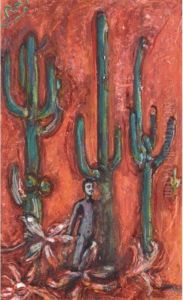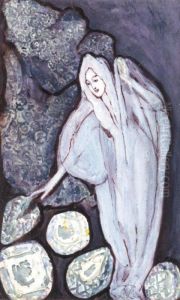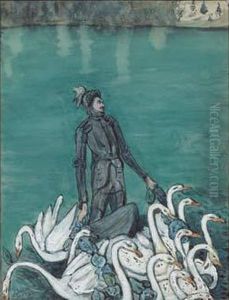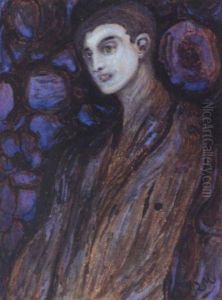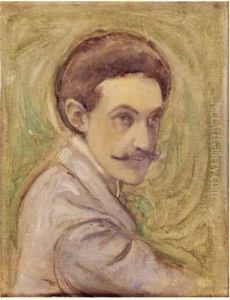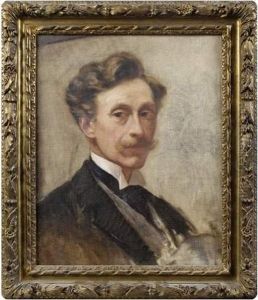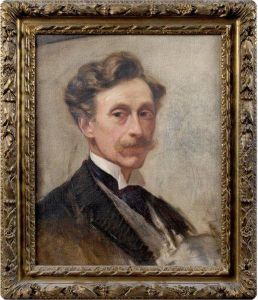Robert De Montesquiou Paintings
Count Robert de Montesquiou-Fezensac was a French aesthete, symbolist poet, art collector, and dandy of the Belle Époque. He was born on March 7, 1855, in Paris into an old aristocratic family. His full name was Marie Joseph Robert Anatole, Comte de Montesquiou-Fezensac. Montesquiou's life was marked by his flamboyant personality, refined taste, and dedication to the arts. He became an iconic figure of his time, known for his wit, poetic talents, and influence in artistic and literary circles.
Montesquiou began his career as a poet and writer, publishing his first volume of poetry, 'Les Chauves-Souris' (The Bats), in 1893. He was closely associated with other symbolist writers and artists, such as Stéphane Mallarmé, Paul Verlaine, and especially Marcel Proust, who is believed to have partly based the character of Baron de Charlus in 'In Search of Lost Time' on Montesquiou. His poetry was characterized by its esoteric style and decadent themes, reflecting the aesthetic sensibilities of the time.
Aside from his literary pursuits, Montesquiou was an avid art collector and patron. He amassed a significant collection of works by contemporary artists, such as Giovanni Boldini, Odilon Redon, and James McNeill Whistler, whose famous portrait of Montesquiou, 'Arrangement in Black and Gold: Comte Robert de Montesquiou-Fezensac', captures the count's elegant and enigmatic presence. Montesquiou was also a mentor to several younger artists and writers, providing them with support and guidance.
Montesquiou's home, the Hôtel de Montesquiou, was a lavish showcase for his art collection and the site of many high-society gatherings. He was known for his extravagant lifestyle, meticulous attire, and the care he took in curating his public image. His influence extended beyond the arts to the realms of fashion and interior design, where he left a lasting mark with his exquisite taste and love for luxury.
Count Robert de Montesquiou died on December 11, 1921, in Menton, France. Although he may not be as well-known today as some of his contemporaries, his legacy lives on through the works he inspired, the artists he supported, and the anecdotes of his legendary personality that have been passed down through the generations.
